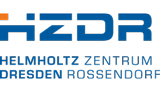Science at Felsenkeller
The scientific motivation for the new underground accelerator laboratory at Felsenkeller is to understand the production of the chemical elements in the universe. The science case of Felsenkeller is regularly updated, based on the recommendations of the Felsenkeller Scientific Advisory Board (see below).
|
The plot shows the observed abundance of the chemical elements in the solar system, on a relative scale. The lightest elements hydrogen, helium, and lithium have been produced in Big Bang nucleosynthesis in the very first minutes of the universe. Two of them, hydrogen and helium, are the most abundant elements observed. The third and fourth most abundant elements are carbon and oxygen. They originate in hydrostatic stellar helium burning, and they form the basis for many subsequent processes of nucleosynthesis as outlined in the plot. The light elements up to iron are mainly produced by nuclear fusion processes, whereas the heavy elements beyond iron are mostly the product of neutron capture processes in stars and stellar explosions. |
Observed elemental abundances in the solar photosphere (Data by Asplund et al. 2006) |
A number of other nucleosynthesis processes play a role, as well. Overall, nuclear astrophysics aims to explain the patterns observed in the abundance plot: Why does the world around us consist of exactly those chemical elements that we see? Which astronuclear processes have generated exactly the right mix of elements that are needed for human life to develop?
The Felsenkeller underground accelerator laboratory will be used both for in-house research by the two institutions HZDR and TU Dresden that have installed the laboratory and as a facility that will be made available free of charge to scientific users from any country, based on the recommendations of an independent international scientific advisory board.
Felsenkeller link to astronuclear research in the HZDR Nuclear Physics division
The Felsenkeller low-energy ion accelerator is synergetic to the nELBE and γELBE installations at HZDR, both of which are operated by the HZDR Nuclear Physics Division. Here, just one example for these synergies is given, namely the nuclear reactions around neon isotopes:
HZDR nuclear physicists Dr Arnd Junghans and Dr Roland Beyer (nELBE) inspect the Felsenkeller beam line. |
At Felsenkeller, owing to the low background and high beam intensity, resonances in the 22Ne(α,γ)26Mg nuclear reaction may be studied by in-beam γ-ray spectroscopy. The corresponding states in the 26Mg nucleus may be studied by nuclear resonance fluorescence using the γELBE bremsstrahlung beam. The 22Ne(α,γ)26Mg reaction is important as a competitor to a main neutron source for the astrophysical s-process: 22Ne(α,n)25Mg. At nELBE, yet another reaction on neon can be studied, namely 20Ne(n,α)17O which is the time-inverted partner of the 17O(α,n)20Ne reaction that restores neutrons consumed by a so-called neutron poison reaction to the stellar scenario. In brief: Higher 22Ne(α,γ)26Mg yields measured at Felsenkeller and higher 26Mg γ-widths measured at γELBE would lead to a lower number of neutrons in the star. Higher 20Ne(n,α)17O yields measured at nELBE, by contrast, lead to a higher number of neutrons in the star. |
In-house research at Felsenkeller
Two "day one" nuclear reactions have been identified for the in-house research: The 3He(α,γ)7Be and 12C(α,γ)16O reactions.
|
Astrophysical S-factor of the 3He(α,γ)7Be reaction as a function of energy. The Gamow peak for the Sun (blue) and the sensitive energy region for Big Bang Nucleosynthesis (red) are also shown. |
The 3He(α,γ)7Be reaction is important in two distinct astrophysical scenarios:
Going from right to left in the plot, the 3He(α,γ)7Be cross section (shown parameterized as the astrophysical S-factor S34) has been measured precisely by several independent groups for E ≥ 0.3 MeV, again precisely by the LUNA collaboration (including HZDR scientists) for E = 0.1-0.2 MeV, and only indirectly for E ≤ 0.1 MeV. |
At Felsenkeller, the entire 3He(α,γ)7Be excitation function shall be covered from 0.1-1.0 MeV, in order to connect the various experiments in one study, measuring bith the emitted in-beam γ-rays and the induced 7Be activity. The new data will decisively improve the precisions of the Big Bang predictions of 7Li and of the predicted 7Be and 8B solar neutrino fluxes.
|
The 12C(α,γ)16O reaction affects the ratio of abundances of the two elements carbon and oxygen. It has been studied many times in the past, but at energies that are much higher than the Gamow peak for the relevant astrophysical scenario. Due to two subthreshold resonances, one affecting the electric dipole (E1) and another the electric quadrupole (E2) component of the S-factor, the extrapolation from the energies where data exist to the Gamow peak is fraught with uncertainty. |
Astrophysical S-factor of the 12C(α,γ)16O reaction. The Gamow peak for two different helium burning temperatures are given. |
Taking advantage of the ultra-low background at Felsenkeller, the 12C(α,γ)16O excitation function shall be measured from 0.6-2.0 MeV, entering the Gamow peak area at least for the highest helium burning temperatures.
Felsenkeller Scientific Advisory Board
Once the accelerator has been tested successfully in some in-house research campaign, a significant number of beam time hours will be made available to the worldwide scientific community for the purposes of pure scientific research, free of charge and based on the recommendations by an independent scientific advisory board.
The scientific advisory board of Felsenkeller consists of:
- Prof. Alessandra Guglielmetti, University of Milan and INFN (chair)
Felsenkeller Scientific Advisory Board, first meeting 23.01.2020: Zsolt Fülöp, Alessandra Guglielmetti (chair), Jordi José, and Alison Laird.
Foto: Bernd Rimarzig
- Prof. Zsolt Fülöp, MTA ATOMKI, Debrecen
- Prof. Jordi José, UPC Polytechnical University of Catalonia, Barcelona
- Prof. Alison Laird, University of York
It is planned to open the Felsenkeller accelerator for outside users in spring 2021, with a first call for proposals to be published in fall 2020:
Beamtime at the Felsenkeller accelerator is available through Transnational Access via ChETEC-INFRA.
Information about the application can be found here. Also, feel free to contact us.

